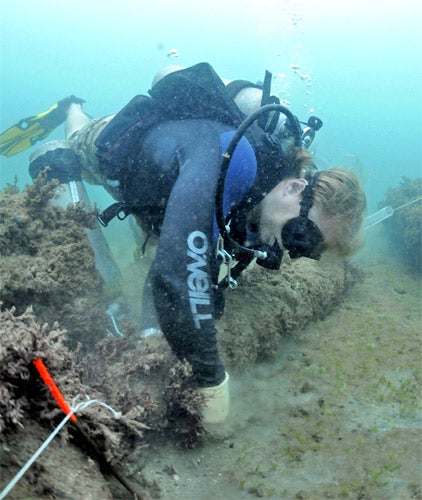Captain Morgan's lost cannon recovered in Panama's waters

Your support helps us to tell the story
From reproductive rights to climate change to Big Tech, The Independent is on the ground when the story is developing. Whether it's investigating the financials of Elon Musk's pro-Trump PAC or producing our latest documentary, 'The A Word', which shines a light on the American women fighting for reproductive rights, we know how important it is to parse out the facts from the messaging.
At such a critical moment in US history, we need reporters on the ground. Your donation allows us to keep sending journalists to speak to both sides of the story.
The Independent is trusted by Americans across the entire political spectrum. And unlike many other quality news outlets, we choose not to lock Americans out of our reporting and analysis with paywalls. We believe quality journalism should be available to everyone, paid for by those who can afford it.
Your support makes all the difference.An international team of marine archaeologists has recovered six iron cannon from a reef in shallow waters not far from the mouth of the Panama Canal. They believe the weapons were lost during one of the less glorious chapters of British adventurism in the 17th-century featuring Captain Henry Morgan.
The cannon were prised from the reef a week ago amid fears that they might be plundered by treasure-hunters and could be the only physical evidence tying Capt Morgan to the region upon which he had such an impact more than 300 years ago. He remains a legend thanks to the brand of rum named after him. "Every school kid learns about Morgan's activities, but we have never seen any of his materials," said archaeologist Tomas Mendizibal, of Patronato Panama Viejo, a government agency that is overseeing excavation of the original site of Panama City. "If these are indeed his cannon, it would be a first."
A privateer for the Crown sent to protect trade routes to the Americas, Capt Morgan was seeking to capture the Castillo de San Lorenzo, at the mouth of the Chagres River, from the Spanish when his command ship, the Satisfaction, foundered on the reef with three other ships that were following him.
The fort, as it happened, had already been taken by a forward party of his own men. But Capt Morgan was not quite done. His ships sinking in the shallow waters behind him, he paddled upriver with his soggy men in search of Spanish gold in Panama City.
He inadvertently burned the town to the ground in violation of a treaty between Britain and Spain. Capt Morgan, who was from South Wales, was eventually forgiven by King Charles II for his carelessness and sent to Jamaica where he became Lieutenant-Governor.
The cannon are among various artefacts found on the reef in 2008 thought to have been spilled by Capt Morgan's ships, much of them encrusted in sediment that has turned to rock. They were first studied and measured at the site by Ruth Brown, an acknowledged expert in cannon formerly of the Royal Amouries in London. The decision to remove them from the reef was taken after divers found evidence of gouging and digging around them, presumably by treasure-hunters.
Research at the site has been led by the Waitt Institute, the Texas State University and the National Oceanic and Atmospheric Administration in the United States in conjunction with the Panamanian government.
Join our commenting forum
Join thought-provoking conversations, follow other Independent readers and see their replies
Comments